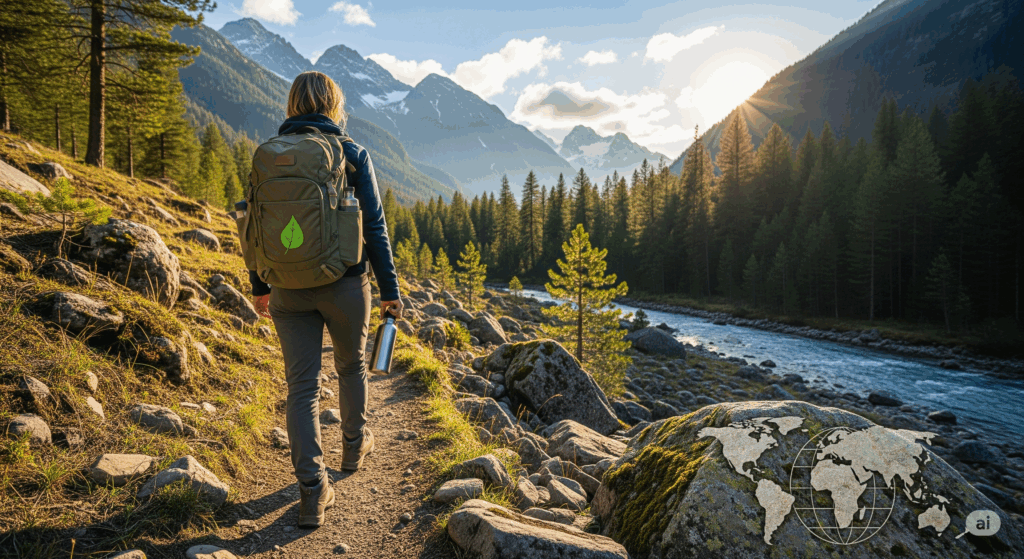
Are you looking for investment, pitch your idea with us!
For centuries, travel has been the most exciting way to expand our horizons—discovering cultures, marveling at nature’s wonders, and connecting with people across the globe. But in today’s world, tourism has become a double-edged sword. While it brings joy and economic growth, it also leaves behind a heavy footprint: carbon emissions, plastic waste, habitat destruction, and cultural erosion.
This raises an urgent question: can we continue to explore the world without harming it? The answer is yes—if we embrace eco-friendly travel.
🌱 What Does Eco-Friendly Travel Really Mean?
Eco-friendly travel, often called sustainable tourism, is not about canceling vacations or restricting our wanderlust. Instead, it’s about making choices that reduce environmental harm and enhance the well-being of the places we visit. It’s a mindset shift—from being passive consumers of destinations to active guardians of them.
Think of it as a simple equation: For every journey, give back as much (or more) as you take.
🌱 Why Eco-Friendly Travel Matters?
The tourism industry contributes nearly 8% of global carbon emissions, with air travel and mass tourism as major contributors. Popular destinations like Venice, Bali, and the Himalayas have struggled with over-tourism, leading to waste accumulation, resource shortages, and damage to ecosystems. If left unchecked, these impacts will not only harm nature but also destroy the very beauty travelers come to witness.
By adopting sustainable travel practices, we can preserve the environment, support communities, and still fulfill our wanderlust.
🌍 The Growing Impact of Tourism
To understand the need for sustainable travel, we must first face the reality:
- ✈️ Carbon Footprint of Flights: A single long-haul flight can emit more CO₂ than some people produce in an entire year.
- 🏖️ Overtourism Crisis: Cities like Venice and Barcelona have had to impose restrictions because millions of visitors overwhelm their fragile ecosystems and infrastructure.
- 🐢 Plastic Pollution: Popular beaches, once pristine, now struggle with tons of plastic waste left by tourists.
- 🏞️ Wildlife Disturbance: Safaris and unregulated trekking often disrupt animal habitats.
If unchecked, tourism could destroy the very wonders people travel to see.
✅ How Can We Travel Without Harming the Planet?
1. ✈️ Smarter Transportation Choices
Flying less frequently and choosing trains, buses, or even cycling for short distances reduces emissions drastically. If flying is unavoidable, travelers can:
- Pick airlines that invest in sustainable fuel.
- Take direct flights (reduces take-off emissions).
- Use carbon offset programs.
2. 🧳 Travel Light, Leave Less Behind
A lighter suitcase means less fuel consumption. Packing reusable bottles, bamboo toothbrushes, tote bags, and eco-friendly toiletries helps cut single-use waste.
3. 🏡 Stay in Green Accommodations
Eco-lodges, farm stays, and hotels with green certifications ensure energy conservation, water efficiency, and waste management. Websites like EcoBnb and Green Pearls list such stays worldwide.
4. 🍴 Support Local Communities
Dining in local restaurants, buying handmade crafts, and using local guides keep money within the community and reduce reliance on global chains. This strengthens cultural preservation while cutting supply-chain emissions.
5. 🌿 Respect Nature and Culture
Eco-friendly travel is not only about saving trees and oceans—it’s about respecting traditions too. Dress modestly where required, learn a few words of the local language, and never exploit wildlife for photos or souvenirs.
📌 Real-World Examples of Eco-Friendly Travel
- Costa Rica: Known as a global leader in eco-tourism, the country protects over 25% of its land as reserves and national parks. Travelers contribute by choosing eco-lodges and participating in conservation activities.
- Bhutan: This Himalayan kingdom measures success through Gross National Happiness and limits mass tourism by charging a sustainable development fee, ensuring fewer visitors but higher quality of experiences.
- Norway: The fjords now welcome electric ferries to reduce emissions, showing how technology can transform tourism.
These destinations prove that responsible travel is not just possible—it’s thriving.
🌎 The Future of Eco-Friendly Travel
The travel industry is adapting: airlines investing in biofuels, hotels running on solar energy, and governments pushing for eco-tourism certifications. Millennials and Gen Z are leading the charge, often choosing experiences over luxury, and sustainability over convenience.
Digital nomads are also embracing “slow travel,” staying longer in one place to minimize constant flights.
If these trends grow, the next decade could redefine travel into a force for preservation, not destruction.
💡 Final Thought
Exploring the world without harming it is not a dream—it’s a responsibility. Every traveler holds the power to protect ecosystems, respect cultures, and ensure that future generations can also marvel at Earth’s beauty.
Eco-friendly travel doesn’t mean traveling less. It means traveling better—with awareness, respect, and care. 🌱✈️
So, the next time you pack your bags, remember: your choices decide whether your footprints damage or preserve the world.






















